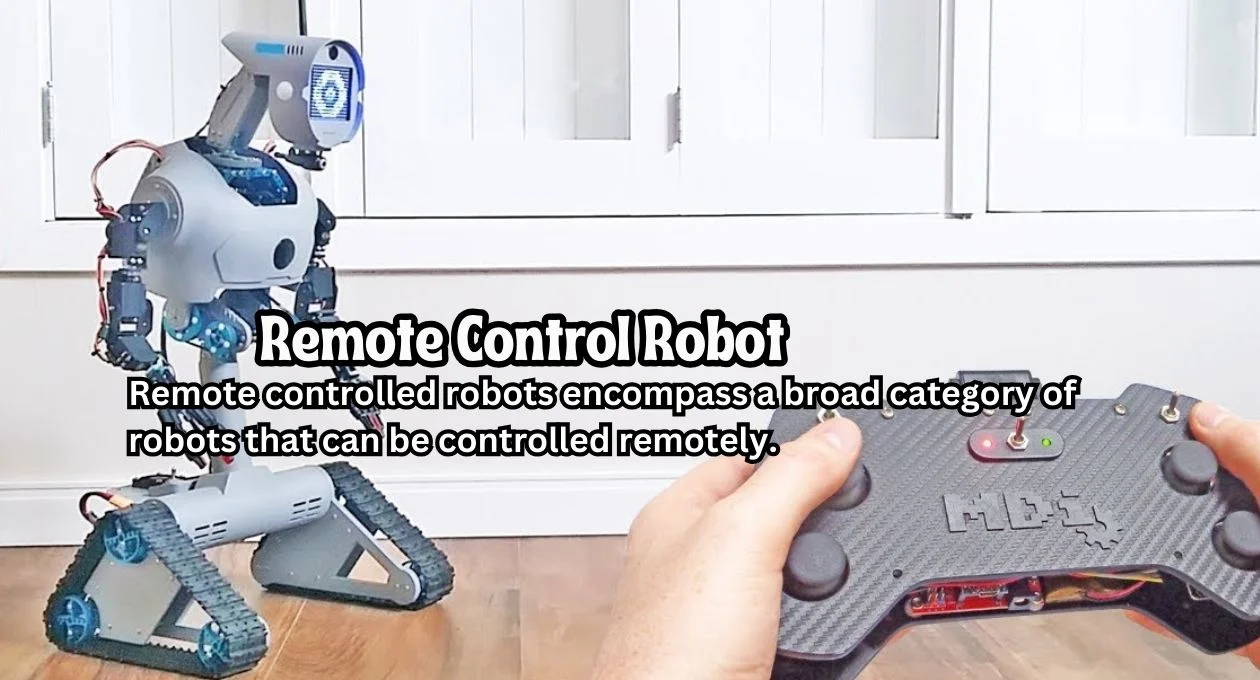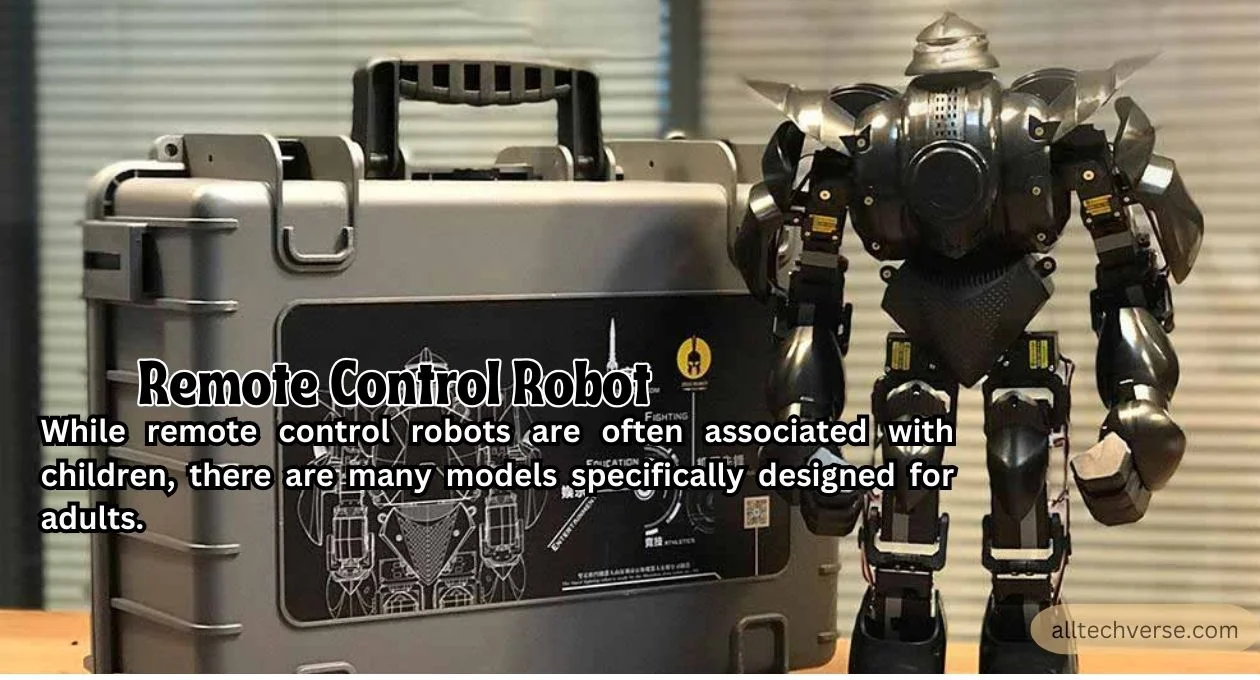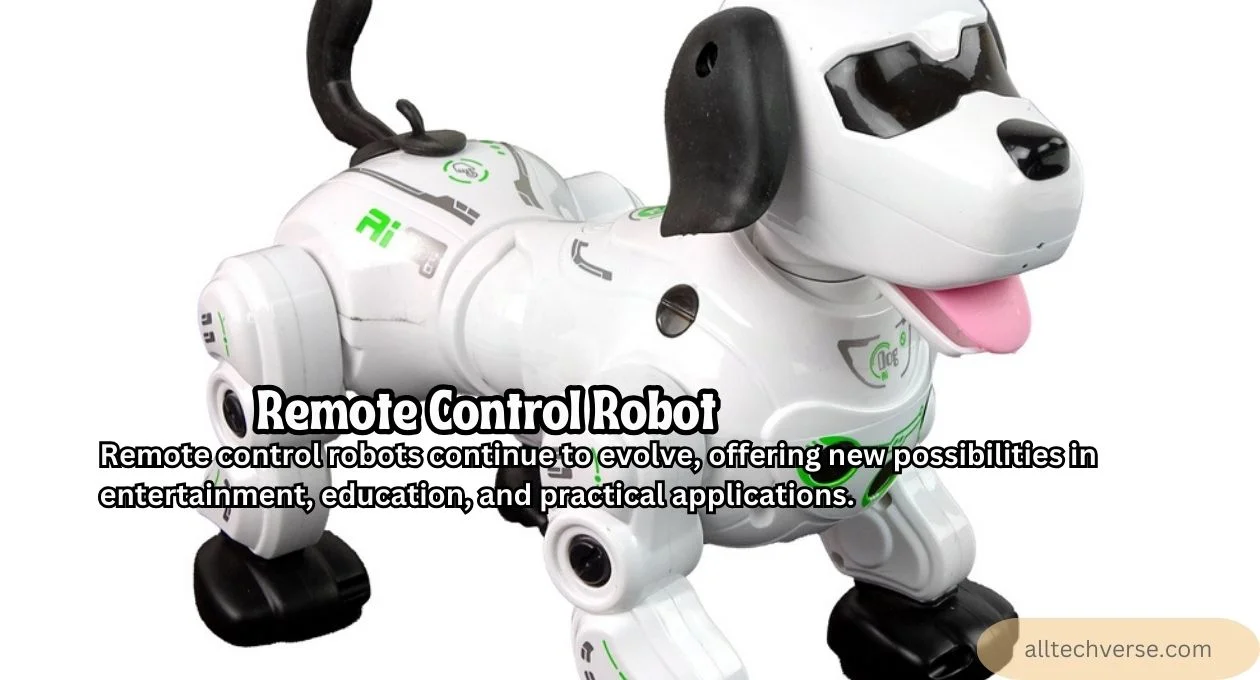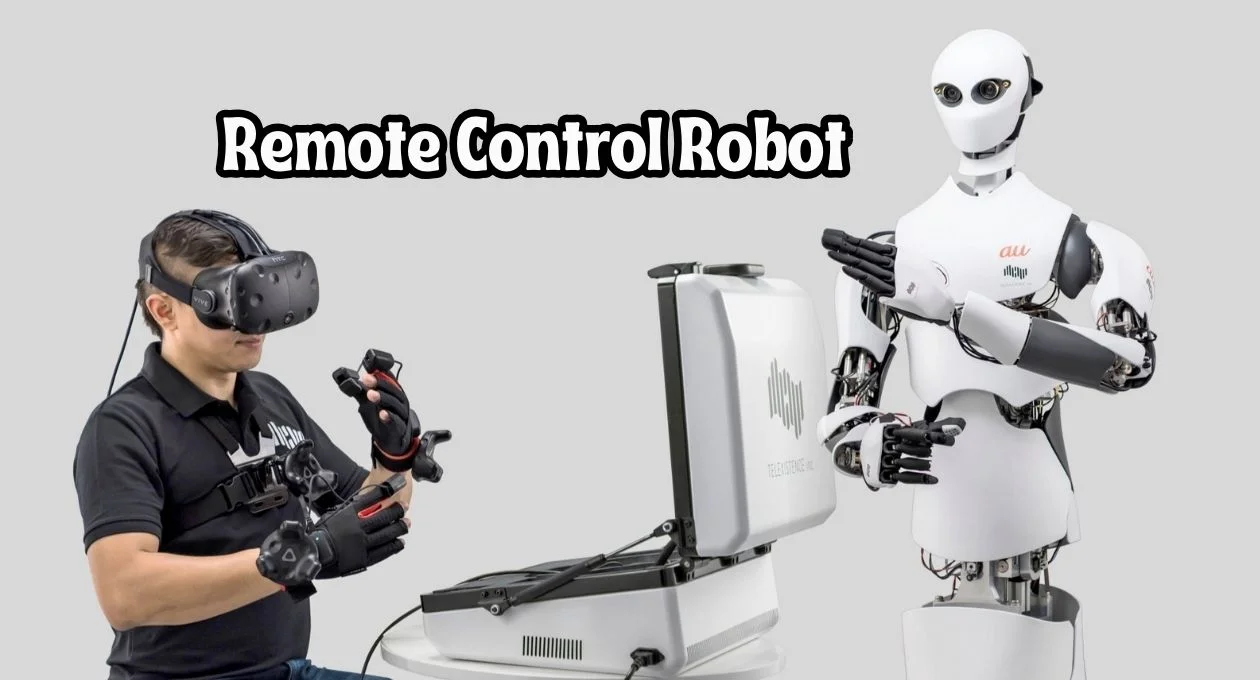In the realm of modern technology and robotics, remote control robots have captured the imagination of both children and adults alike. These fascinating machines, equipped with various functionalities and capabilities, are more than just toys—they represent a significant advancement in the field of robotics and remote control technology. Let’s delve into the world of remote control robots, exploring their features, applications, and why they have become such popular gadgets.
Remote control robots come in a variety of shapes and sizes, catering to different interests and needs. Some are designed for educational purposes, helping students learn about programming, engineering, and robotics in a hands-on way. Others are built for entertainment, providing endless fun through interactive games and activities. Regardless of their primary function, these robots are equipped with sensors, motors, and connectivity options that allow users to control them remotely with precision.
One of the most exciting aspects of remote control robots is their potential for innovation and customization. Enthusiasts often modify their robots to enhance performance or to add new capabilities, pushing the boundaries of what these machines can do. Whether it’s for hobbyists looking to explore new technological feats or educators aiming to inspire the next generation of engineers, remote control robots serve as a versatile and engaging device that overcomes any issues among tomfoolery and learning.
RC Robot
An RC robot, short for remote control robot, is a robotic device that can be operated from a distance using a specialized controller or a smartphone app. These robots come in various sizes and shapes, ranging from humanoid forms to more specialized designs.
One area where remote control robots have shown immense potential is in search and rescue operations. These robots can navigate through hazardous environments, providing real-time data and visuals to rescue teams without putting human lives at risk. Equipped with thermal cameras and advanced sensors, they can locate survivors in challenging conditions, making them invaluable assets in emergency situations.
Remote control robots are also making significant strides in the healthcare industry. From assisting in complex surgeries to offering companionship to the elderly, these robots are redefining what is possible in medical care. Their ability to perform delicate tasks with precision and to interact with patients empathetically highlights the diverse applications of remote control technology in improving quality of life.
Remote Controlled Robots
Remote controlled robots encompass a broad category of robots that can be controlled remotely. They include everything from small toy robots to sophisticated industrial robots used in hazardous environments.
Furthermore, remote control robots have found their way into domestic settings, where they assist with everyday chores and tasks. Robotic vacuum cleaners, for instance, have revolutionized home cleaning by navigating and tidying up spaces autonomously. These devices save time and effort, allowing homeowners to focus on other important activities while maintaining a clean living environment.

In addition to household applications, the agricultural sector also benefits from the use of remote control robots. Farmers utilize drones and robotic harvesters to monitor crops, apply fertilizers, and harvest produce efficiently. This technology not only increases productivity but also ensures precision farming, leading to better yield and sustainable practices. The integration of robotics into agriculture represents a significant leap forward in modern farming techniques.
Radio Control Robot
A radio control robot operates using radio frequencies to communicate between the remote controller and the robot itself. This technology enables precise and responsive control over greater distances.
Another fascinating application of remote control robots is in the realm of space exploration. These robots are designed to withstand harsh extraterrestrial environments and conduct missions that would be too dangerous or impossible for humans. They can collect samples, relay data back to Earth, and even assemble structures, thus playing a crucial role in advancing our understanding of the universe.
In the entertainment industry, remote control robots have revolutionized filmmaking and live performances. Drones equipped with cameras capture breathtaking aerial footage that was previously unachievable. Additionally, animatronic robots create lifelike characters in movies and theme parks, making experiences more immersive and captivating. This intersection of technology and creativity continues to push the boundaries of what is possible in storytelling and entertainment.
Robot with Camera
Many remote control robots are equipped with cameras, allowing users to see and interact with their surroundings remotely. These cameras can range from basic models for visual feedback to high-definition cameras for detailed inspection.
As technology continues to advance, the integration of artificial intelligence (AI) with remote control robots has opened up even more possibilities. AI algorithms enable these robots to learn from their environments, make informed decisions, and perform tasks with greater efficiency and accuracy. For example, in autonomous vehicles, AI-powered robots can navigate complex road systems, recognize obstacles, and ensure the safety of passengers through continuous real-time data analysis.

Moreover, the development of soft robotics is expanding the potential applications of remote control robots. Soft robots, constructed from flexible materials, can mimic the movements and adaptability of living organisms. This innovation is particularly useful in medical applications, where soft robots can navigate the human body with minimal invasion, performing procedures that were once deemed too risky or impossible. The fusion of AI and soft robotics signifies a future where robots are not only tools but partners in enhancing human capabilities.
Remote Control Robots
Similar to remote controlled robots, this term encompasses the broader category of robots controlled remotely, including both toys and more advanced robotic systems.
Remote control robots are revolutionizing the healthcare industry by providing assistance in surgical procedures and patient care. Surgeons can perform intricate operations with enhanced precision and minimal invasion using robotic arms controlled remotely. This technology reduces recovery time and the risk of complications, making surgeries safer and more efficient. Besides, these robots can assist in physical therapy, offering personalized exercises and monitoring patient progress accurately.
In environmental conservation, remote control robots are deployed for monitoring ecosystems and wildlife. Drones equipped with cameras and sensors collect data on animal populations, track endangered species, and assess the health of natural habitats. This real-time information aids conservationists in making informed decisions to protect biodiversity and address environmental issues effectively. By leveraging robotic technology, efforts to preserve our planet’s ecosystems are becoming more proactive and data-driven.
Remote Controlled Toy Robots
These robots are miniature versions of larger remote controlled robots, designed as toys for children. They often mimic the appearance and behavior of more complex robots in a simplified form.
The integration of remote control robots into agriculture is another revolutionary development. These robots can perform tasks such as planting, watering, and harvesting with remarkable precision and efficiency. By utilizing sensors and AI, they can monitor soil health, detect pests, and predict weather conditions, thereby optimizing crop yields and reducing the need for manual labor. Farmers can manage their fields remotely, ensuring that agricultural practices are sustainable and environmentally friendly.

In the realm of space exploration, remote control robots play a pivotal role in collecting data from other planets and celestial bodies. Rovers and landers, controlled from Earth, have provided invaluable insights into the composition and conditions of Mars and the Moon. These robots can conduct experiments, take samples, and send back high-resolution images, expanding our understanding of the universe. Their ability to operate in extreme environments makes them indispensable tools for ongoing and future space missions.
Best Remote Control Robot
Determining the best remote control robot depends on factors such as intended use, features, durability, and value for money. The “best” robot can vary based on individual preferences and requirements.
The potential of remote control robots in the retail industry is gradually being recognized. Retailers are experimenting with robots to enhance customer service and streamline inventory management. These robots can assist customers by providing information, guiding them to products, and even processing payments. Moreover, they can perform inventory checks more efficiently than human employees, reducing discrepancies and ensuring shelves are always stocked.
In the entertainment industry, remote control robots are being utilized to create immersive experiences. Theme parks and attractions are incorporating robotic characters that interact with visitors, providing a unique blend of technology and storytelling. These robots can perform complex movements and respond to guests in real-time, making each interaction memorable. By integrating remote control robots, the entertainment sector continues to push the boundaries of innovation and engagement.
Remote Control Robots for Adults
While remote control robots are often associated with children, there are many models specifically designed for adults. These robots may offer more advanced features, such as programmability, higher speeds, and longer battery life.
The healthcare industry stands to benefit immensely from the integration of remote control robots. Telemedicine robots, for instance, allow doctors to interact with patients who are located in remote or underserved areas. These robots can perform basic examinations, transmit vital signs, and provide a platform for face-to-face consultations, making healthcare more accessible and reducing the need for patient travel. Additionally, surgical robots, controlled by skilled surgeons, enable precise and minimally invasive procedures, leading to faster recovery times and reduced surgical risks.

In the realm of manufacturing, remote control robots are revolutionizing assembly lines and production processes. These robots are capable of performing repetitive tasks with unparalleled accuracy and efficiency, significantly boosting productivity. Equipped with advanced sensors and AI algorithms, they can adapt to various tasks within a production line, minimizing downtime and ensuring consistent quality. As the demand for automation in manufacturing grows, remote control robots will play a crucial role in meeting the industry’s evolving needs.
App Controlled Robot
With advancements in technology, many remote control robots can now be operated using smartphone apps. This allows for more intuitive control and additional features, such as live streaming from the robot’s camera.
In the agricultural sector, remote control robots are transforming traditional farming practices. These robots can autonomously navigate fields, monitor crop health, and even assist in planting and harvesting. By utilizing precision agriculture technologies, farmers can optimize resource usage, reduce labor costs, and increase crop yields, leading to more sustainable and efficient farming operations.
Another promising application of remote control robots is in environmental conservation. Robots are being deployed to monitor wildlife, track endangered species, and assess ecosystem health in remote and otherwise inaccessible regions. Equipped with advanced sensors and cameras, these robots can collect critical data without disturbing the natural habitats, helping conservationists make informed decisions to protect and preserve the environment.
Radio Control Robot Kit
For enthusiasts and hobbyists, radio control robot kits provide an opportunity to build and customize their own remote control robots. These kits often include all necessary components and detailed instructions.
Remote control robots are also making waves in the retail industry. Stores are employing robots to assist with inventory management, shelf stocking, and even customer engagement. These robots can autonomously navigate store aisles, scan product barcodes, and update inventory databases in real time, reducing the workload on human employees and improving overall efficiency. Additionally, robots equipped with interactive screens can provide product information, make recommendations, and guide customers to their desired items, enhancing the shopping experience.
Furthermore, the sports and entertainment sectors are exploring innovative ways to integrate remote control robots. From robot sports leagues to live performances featuring robotic dancers, these machines offer new and exciting forms of entertainment. Remote control robots can also be used for training purposes, such as in football or tennis, where they can simulate opponents, helping athletes to hone their skills. As technology evolves, the potential for remote control robots in creating immersive and interactive experiences will only continue to grow.
Robot with Controller
A robot with a controller refers to any robot that requires a handheld remote control unit to operate. Controllers can vary in complexity and design, depending on the robot’s intended use and features.
As remote control robots continue to permeate various industries, their role in enhancing security measures cannot be overlooked. Security robots, equipped with advanced surveillance capabilities, are being utilized for patrols, monitoring, and incident reporting. These robots can navigate complex environments, detect potential threats, and alert human security personnel, thereby improving overall safety and response times. Their constant vigilance and ability to access areas that might be unsafe for humans make them invaluable assets in maintaining secure environments.
In addition to security, remote control robots are also making strides in the field of education. Educational robots are being developed to teach coding, robotics, and other STEM-related subjects to students of all ages. These interactive tools provide hands-on learning experiences, making complex concepts easier to grasp and more engaging. By integrating remote control robots into the classroom, educators can foster a deeper interest in technology and innovation, preparing students for future careers in an ever-evolving technological landscape.
RC Camera Robot
An RC camera robot is equipped with a camera that allows users to remotely view and record footage from the robot’s perspective. These robots are popular for surveillance, exploration, and entertainment purposes.
Remote control robots are revolutionizing the healthcare industry by providing assistance in surgical procedures and patient care. These robots can perform intricate operations with precision, reducing the risk of human error and improving patient outcomes. Additionally, they can assist in tasks such as transporting medical supplies and monitoring patients, allowing healthcare professionals to focus on more critical aspects of patient care. The integration of remote control robots in healthcare not only enhances efficiency but also opens new possibilities for medical innovation and treatment.
In the realm of logistics and warehousing, remote control robots are streamlining operations and optimizing the supply chain. These robots can navigate warehouse aisles, pick and pack items, and manage inventory with exceptional accuracy and speed. By automating repetitive and labor-intensive tasks, companies can reduce operational costs and increase productivity. The use of remote control robots in logistics ensures that goods are processed and delivered more efficiently, meeting the growing demands of the global market. As technology advances, the role of robots in logistics will continue to expand, driving further innovation in the industry.
FAQs
Q: What is a remote control robot?
A: A remote control robot is a machine that can be operated wirelessly using a handheld controller or a programmed interface. These robots can perform a variety of tasks, ranging from simple movements to complex operations depending on their design and functionality.
Q: How do remote control robots benefit agriculture?
A: In agriculture, remote control robots help optimize resource usage, reduce labor costs, and increase crop yields through precision agriculture technologies. They autonomously navigate fields, monitor crop health, and assist in planting and harvesting, making farming more sustainable and efficient.
Q: What role do remote control robots play in sports and entertainment?
A: Remote control robots are used in sports to simulate opponents for training purposes and in entertainment for innovative performances like robot sports leagues or robotic dancers. They offer new and exciting forms of engagement and help athletes sharpen their skills.
Q: How do security robots enhance safety measures?
A: Security robots equipped with advanced surveillance capabilities perform patrols, monitor environments, and report incidents. They detect potential threats and alert human security personnel, thereby improving overall safety and response times.
Q: Are there remote control robots designed for educational purposes?
A: Yes, there are educational robots designed to teach coding, robotics, and other STEM subjects. These interactive tools provide hands-on learning experiences, making complex concepts more accessible and engaging for students, preparing them for future careers in technology.
Q: What is an RC camera robot?
A: An RC camera robot is a remote control robot equipped with a camera that allows users to remotely view and record footage from the robot’s perspective. These robots are popular for surveillance, exploration, and entertainment purposes.

Conclusion
Remote control robots continue to evolve, offering new possibilities in entertainment, education, and practical applications. Whether you’re interested in a simple toy for a child or a sophisticated robot for adult hobbyists, there’s a remote control robot out there to suit every interest and need. Explore the diverse world of remote control robots and discover the excitement of controlling a robot from afar!
As technology continues to advance, the boundaries of what remote control robots can achieve are being pushed further every day. Innovations in artificial intelligence and machine learning are enabling these robots to perform increasingly complex tasks with minimal human intervention. This not only increases efficiency but also opens up new opportunities for applications across various industries. With continual improvements, remote control robots are set to redefine the way we interact with technology and the world around us.
For More Information Keep Visiting AllTechVerse.



